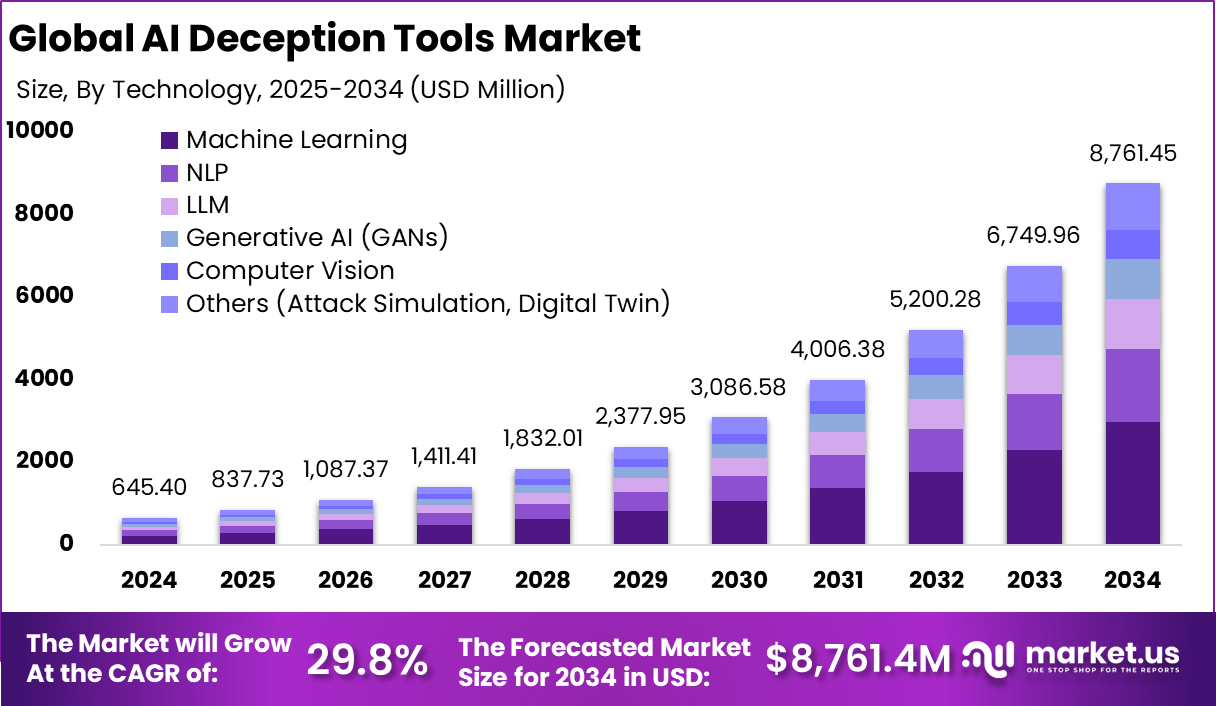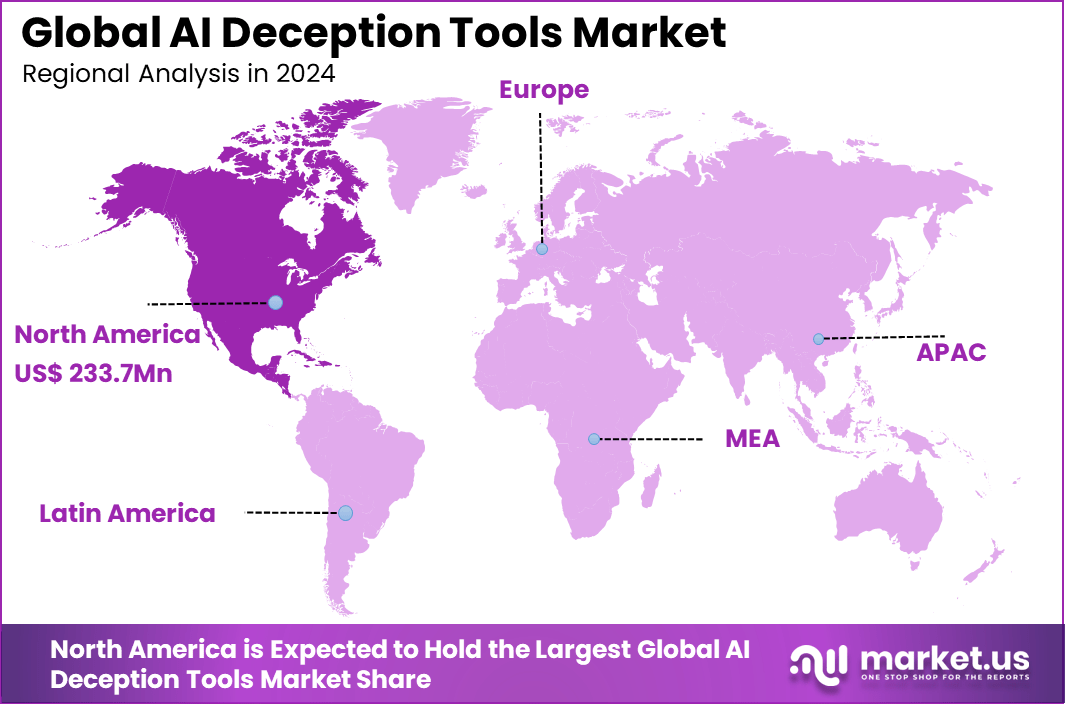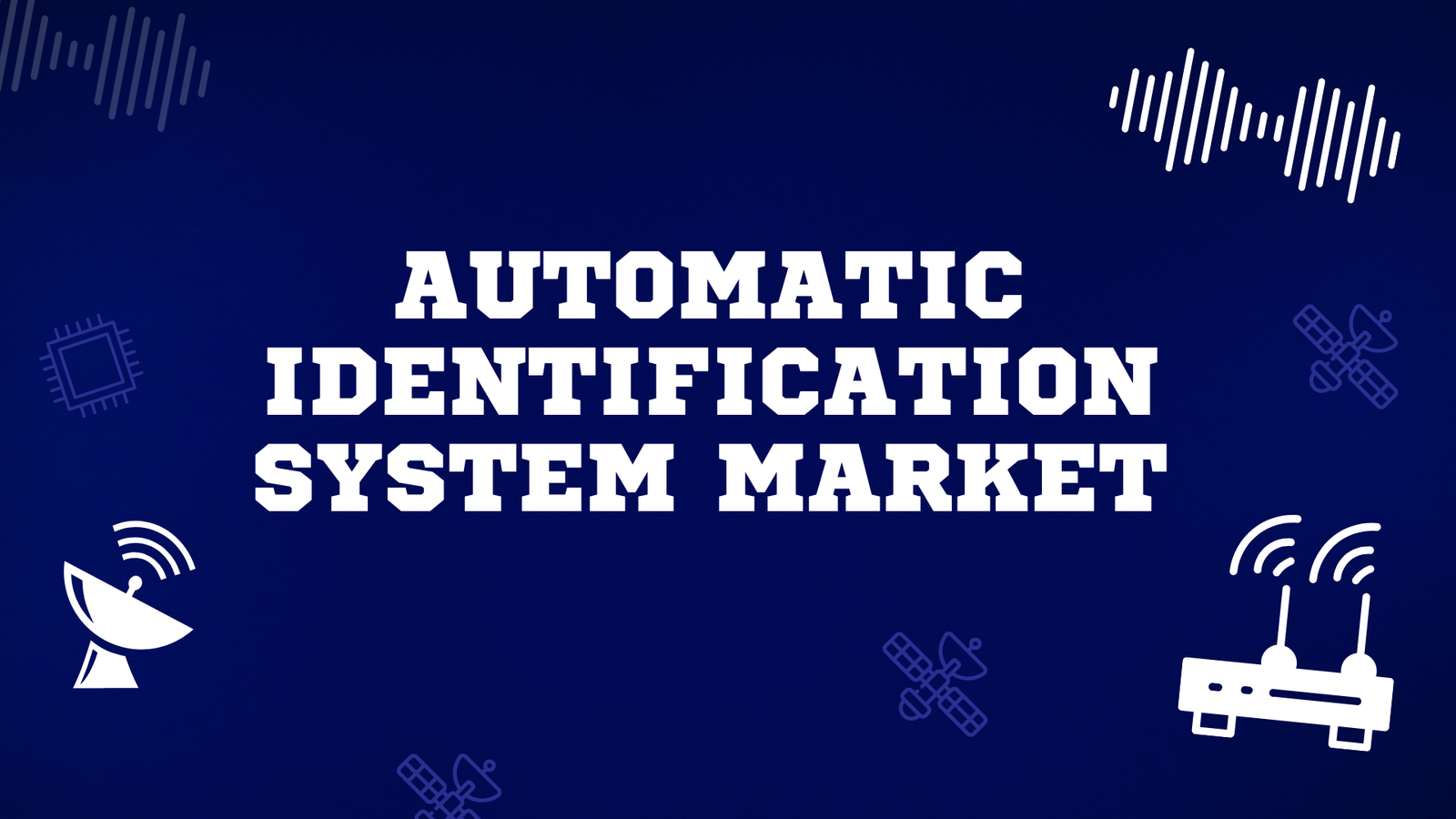AI Deception Tools Market Soar to USD 8,761.45 Mn By 2034
Updated · Aug 22, 2025

WHAT WE HAVE ON THIS PAGE
Introduction
The Global AI Deception Tools Market is projected to reach USD 8,761.45 million by 2034, increasing from USD 645.40 million in 2024. This trajectory reflects a robust compound annual growth rate of 29.8% between 2025 and 2034, highlighting the rising demand for advanced cybersecurity measures that employ AI-driven deception technologies. The market’s momentum is being fueled by the growing sophistication of cyber threats, which has accelerated the adoption of deceptive frameworks to mislead attackers and strengthen defense systems.
The AI Deception Tools Market focuses on advanced artificial intelligence technologies designed to detect, mislead, and mitigate cyber threats by creating realistic digital traps such as honeypots, decoys, and synthetic personas. These tools use machine learning, behavioral analytics, and generative AI to identify and divert sophisticated cyberattacks, including deepfakes, phishing, and advanced persistent threats, before they can cause damage.
Key factors driving this market include the rising complexity and frequency of cyber threats that bypass traditional security systems, the growing adoption of AI by malicious actors to craft deceptive attacks, and increasing regulatory and compliance pressures for proactive cybersecurity solutions. Industries such as finance, healthcare, government, and enterprise IT are major adopters given their need to protect sensitive data and critical infrastructure.

Investment opportunities are strong due to the expanding demand for intelligent, adaptive, and scalable cybersecurity solutions. North America leads the market, driven by significant regulatory actions and high financial risk exposure. Europe is rapidly maturing with landmark regulations such as the EU’s AI Act imposing strict controls on deceptive AI practices, pushing businesses towards compliant AI deception tools. Asia-Pacific is also emerging as a high-growth region amid rising cyber threats and technological development.
Businesses gain multiple benefits from AI deception tools, including early threat detection, reduced risk of breaches, and the ability to buy time for response teams by slowing or confusing attackers. These tools enhance the overall security posture, improve regulatory compliance, and protect intellectual property and consumer trust. By proactively managing threats, organizations minimize financial losses and reputational damage.
Key Insight Summary
- The global market is expected to grow from USD 645.40 million in 2024 to about USD 8,761.45 million by 2034, registering a strong CAGR of 29.8%, driven by rising demand for proactive cyber defense and advanced deception technologies.
- North America led the market in 2024, accounting for a 36.2% share and generating USD 233.7 million in revenue, supported by government security programs and enterprise investments in cyber resilience.
- Machine Learning dominated the technology segment with a 34.1% share, enabling adaptive decoy generation, intelligent detection, and real-time response.
- Cybersecurity applications held the top position with a 55.2% share, as organizations increasingly adopt deception layers to detect, delay, and divert intrusions.
- The Government sector emerged as the largest end-user, driven by defense initiatives, critical infrastructure security, and growing reliance on stealth monitoring systems.
Regional Analysis
In 2024, North America held a dominant market position, accounting for more than 36.2% of the global share, equivalent to USD 233.7 million in revenue. The region’s leadership is supported by strong investments in cybersecurity infrastructure, early deployment of AI-based defense solutions, and a well-established ecosystem of technology providers. With enterprises across critical sectors such as finance, healthcare, and defense prioritizing deception technologies, North America is expected to remain a key driver of innovation and adoption in this market.
Emerging Trend
Generative AI Creating Realistic Deception Environments
A key emerging trend in the AI deception tools market is the use of generative AI technologies to create highly realistic and dynamically adaptive decoy environments. Unlike traditional static honeypots or basic decoys, these generative AI-powered systems can simulate authentic network activity, mimic user behavior, and evolve in response to attack patterns. This adaptive deception significantly improves the ability to detect and mislead sophisticated cyber attackers.
The integration of behavioral analytics and synthetic digital personas enables these tools to proactively engage threat actors, buying defenders valuable time to respond. As cyber threats become more advanced, AI deception tools that leverage generative models are becoming central to next-generation, proactive cybersecurity defense frameworks.
Driver
Rising Complexity and Sophistication of Cyberattacks
The growth of AI deception tools is driven by the increasing complexity of cyber threats, which increasingly evade traditional security measures. Advanced persistent threats (APTs), polymorphic malware, and AI-enhanced phishing campaigns require security solutions that can anticipate and misdirect attackers in real-time.
Organizations, especially in sectors like government, finance, and healthcare, must move beyond reactive defenses to implement AI-powered deception that disrupts attacker reconnaissance and lateral movement. This need for sophisticated, autonomous defense is accelerating market adoption globally.
Restraint
Ethical and Regulatory Ambiguities
A significant restraint on the proliferation of AI deception tools arises from ethical, legal, and regulatory uncertainties. Since deception technologies intentionally mislead attackers, organizations must navigate complex issues around privacy, consent, and the potential for misuse.
Lack of clear legal frameworks and differing regulations across regions complicate deployment decisions, especially in regulated industries. Companies face challenges balancing the efficacy of deception strategies with ethical considerations and compliance obligations, which can slow widespread adoption.
Opportunity
Integration with Zero-Trust Security and Threat Intelligence
AI deception tools have significant opportunities in enhancing zero-trust security architectures. By dynamically generating decoys and continuously monitoring behavioral anomalies, these tools complement zero-trust frameworks that assume no user or device is inherently trustworthy.
Moreover, AI deception enhances threat intelligence by attracting and analyzing attacker behavior, creating actionable insights that feed into broader security strategies. This integration supports automated attack surface management and adaptive cyber-defense, presenting new business avenues for AI deception technology providers.
Challenge
Managing False Positives and Operational Complexity
One of the critical challenges in the AI deception tools market is managing false positive alerts generated by complex deception environments. Overly sensitive detection can overwhelm security teams with benign anomalies classified as threats, reducing operational effectiveness.
Additionally, deploying, managing, and scaling adaptive deception systems require specialized skills and resources. The complexity involved in configuring environments and interpreting signals demands ongoing tuning and expertise, which can pose barriers for organizations lacking mature cybersecurity operations.
Key Market Segments
By Technology
- Natural Language Processing (NLP)
- Machine Learning
- LLM
- Generative AI (GANs)
- Computer Vision
- Others (Attack Simulation, Digital Twin)
By Application
- Fraud Detection
- Cyber Security
- Others (Data Privacy, Information Verification)
By End Use
- Healthcare
- BFSI
- Telecom & IT
- Government
- Retail
- Others
Top Key Players in the Market
- Commvault
- Smokescreen
- Fidelis Security
- NeroTeam Security Labs
- CyberTrap Machine Learning GmbH
- Fortinet, Inc.
- SentinelOne
- Acalvio Technologies, Inc.
- Proofpoint, Inc.
- Cynet
Source – https://market.us/report/ai-deception-tools-market/
Sources

Barry loves technology and enjoys researching different tech topics in detail. He collects important statistics and facts to help others. Barry is especially interested in understanding software and writing content that shows its benefits. In his free time, he likes to try out new healthy recipes, practice yoga, meditate, or take nature walks with his child.











